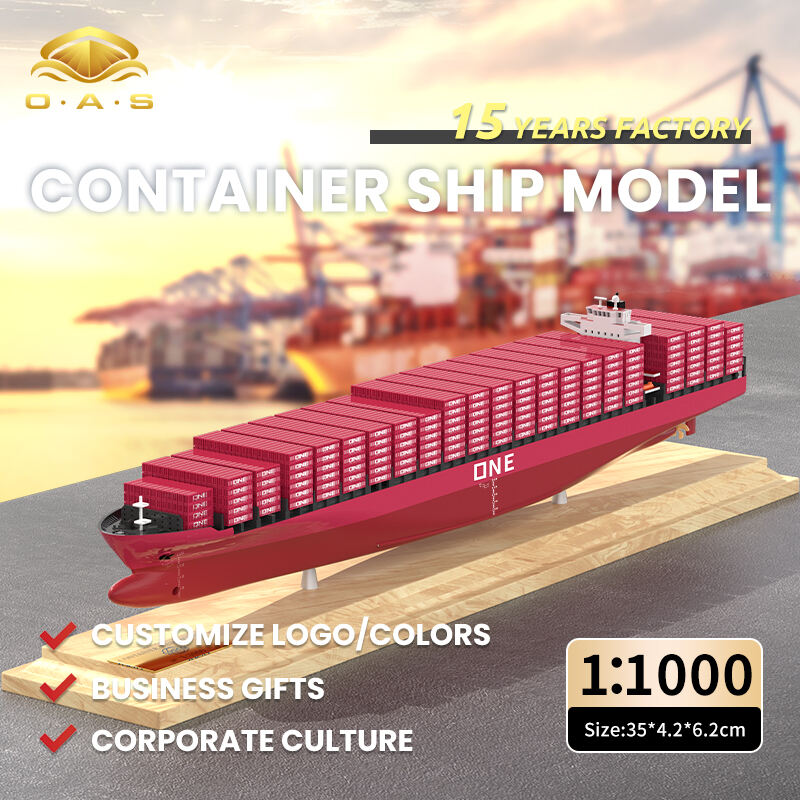Maritime collectors and enthusiasts have long cherished ship models for their historical significance and artistic beauty. Among these prized possessions, LNG ship models stand out as particularly fascinating pieces that capture the essence of modern maritime engineering. These intricate replicas represent more than just vessels; they embody the technological advancement and sophistication of liquefied natural gas transportation at sea.
The allure of an LNG ship model lies in its unique features that distinguish it from conventional cargo vessel representations. From the distinctive spherical Moss tanks to the pristine membrane containment systems, these models showcase the extraordinary engineering required to transport one of the world's most important energy resources.
One of the most striking features of an LNG ship model is the detailed representation of its cargo containment systems. Whether featuring the iconic spherical Moss tanks or the more modern membrane systems, these miniatures must accurately depict the intricate insulation and structural support mechanisms that make LNG transportation possible.
Model makers pay particular attention to the scale and proportion of these systems, ensuring that each tank's geometry and arrangement precisely mirrors its full-scale counterpart. The attention to detail extends to the piping systems, manifolds, and safety installations that are crucial components of actual LNG carriers.
An authentic LNG ship model incorporates all the specialized equipment found on operational vessels. This includes the complex loading arms, vapor return lines, and emergency shutdown systems. The models often feature miniature versions of gas detection equipment, firefighting systems, and thermal protection installations.
These safety features are not merely decorative elements but serve as educational tools, helping collectors and maritime professionals understand the comprehensive safety measures implemented in LNG shipping. The precise replication of these components makes each model an valuable reference piece for training and display purposes.

Creating an LNG ship model requires exceptional skill and precision. Master model makers employ sophisticated techniques to recreate the vessel's complex geometry and structural details. The hull construction often involves multiple layers of high-grade materials, carefully shaped and assembled to achieve the perfect form.
The use of computer-aided design and 3D printing technology has revolutionized the production of certain components, enabling unprecedented levels of accuracy in reproducing complex shapes and patterns. However, traditional handcrafting skills remain essential for achieving the finest details and finishing touches.
The choice of materials plays a crucial role in the quality and longevity of an LNG ship model. Premium models typically feature marine-grade woods, high-quality metals, and specialized plastics that ensure durability while maintaining visual accuracy. The selection of paints and coatings must reflect the actual vessel's appearance while providing lasting protection to the model.
Authentic materials are particularly important for creating realistic textures and surfaces, from the non-skid deck patterns to the smooth finish of the cargo tanks. Each material is carefully chosen to withstand display conditions while maintaining its appearance over time.
LNG ship models serve as three-dimensional records of maritime technological progress. Each model represents a specific era in LNG shipping evolution, from the pioneering vessels of the 1960s to today's ultra-modern carriers. These miniatures help preserve the history of naval architecture and marine engineering developments.
Collectors can trace the advancement of LNG transportation through their model collections, observing how vessel designs have adapted to increasing cargo capacity requirements and enhanced safety standards. These models become valuable historical artifacts, documenting the industry's transformation over time.
Maritime academies and training institutions frequently use LNG ship models as educational tools. These detailed replicas help students understand vessel layout, equipment placement, and operational procedures without accessing actual ships. The models provide a tangible reference for studying ship architecture and safety systems.
Professional maritime personnel also benefit from these models during training sessions and operational planning meetings. The three-dimensional representation helps visualize procedures and facilitate better understanding of shipboard operations.
High-quality LNG ship models are relatively rare in the maritime collectibles market, making them particularly valuable to serious collectors. The complexity of their construction and the specialized knowledge required to create accurate representations contribute to their exclusivity.
Limited production runs and custom-built models often appreciate in value over time, especially those representing historically significant vessels or featuring exceptional craftsmanship. Collectors recognize the investment potential of these specialized maritime artifacts.
The value of an LNG ship model is enhanced by proper documentation and certification. Reputable model makers provide detailed certificates of authenticity, building specifications, and historical information about the represented vessel. This documentation becomes an integral part of the collection's value.
Professional appraisers consider factors such as scale accuracy, detail quality, and historical significance when evaluating these models. The presence of original documentation and packaging can significantly impact their market value.
Most collector-grade LNG ship models are built to scales ranging from 1:100 to 1:150, though some museum-quality pieces may be larger or smaller depending on their intended display purpose and level of detail required. The scale choice often depends on balancing the need for detail representation with practical display considerations.
These models should be displayed in climate-controlled environments, protected from direct sunlight and dust. Regular gentle cleaning with appropriate tools, secure mounting systems, and proper display cases are essential for long-term preservation. Professional maintenance may be required periodically to ensure the model's condition remains optimal.
The value is influenced by factors including craftsmanship quality, scale accuracy, historical significance of the represented vessel, rarity of the model, condition, and accompanying documentation. Models created by renowned makers or representing significant vessels in LNG shipping history typically command premium prices in the collector's market.
 Hot News
Hot News2024-06-11
2024-06-07
2024-06-01
2024-06-01
2024-06-01
2024-05-25